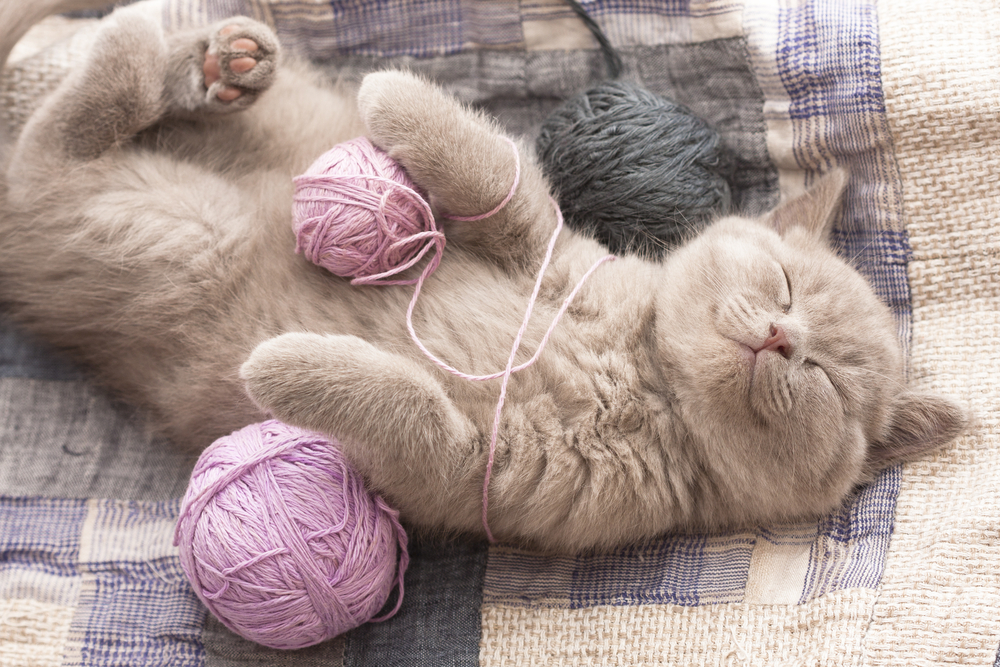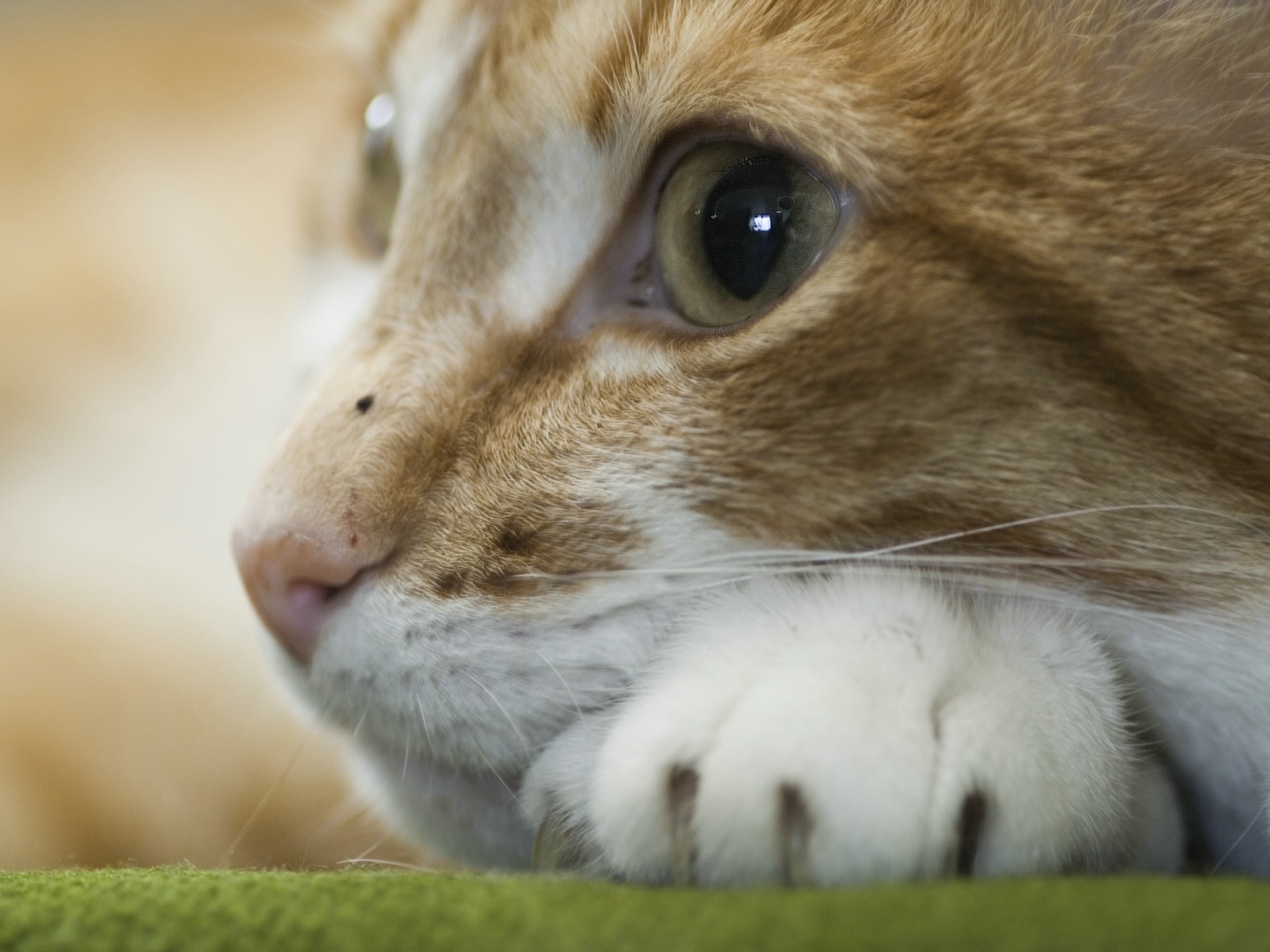Beautiful Cats Wallpapers Biography
source(google.com.pk)
The domestic cat (Felis catus or Felis silvestris catus) is a small, usually furry, domesticated, and carnivorous mammal. It is often called the housecat when kept as an indoor pet, or simply the cat when there is no need to distinguish it from other felids and felines. Cats are often valued by humans for companionship and their ability to hunt vermin and household pests.
Cats are similar in anatomy to the other felids, with strong, flexible bodies, quick reflexes, sharp retractable claws, and teeth adapted to killing small prey. Cat senses fit a crepuscular and predatory ecological niche. Cats can hear sounds too faint or too high in frequency for human ears, such as those made by mice and other small game. They can see in near darkness. Like most other mammals, cats have poorer color vision and a better sense of smell than humans.
Despite being solitary hunters, cats are a social species, and cat communication includes the use of a variety of vocalizations (meowing, purring, trilling, hissing, growling and grunting) as well as cat pheromones and types of cat-specific body language
Cats have a rapid breeding rate. Under controlled breeding, they can be bred and shown as registered pedigree pets, a hobby known as cat fancy. Failure to control the breeding of pet cats by spaying and neutering, and the abandonment of former household pets, has resulted in large numbers of feral cats worldwide, requiring population control.
Since cats were cult animals in ancient Egypt, they were commonly believed to have been domesticated there, but there may have been instances of domestication as early as the Neolithic.
A genetic study in 2007 revealed that domestic cats are descended from African wildcats (Felis silvestris lybica) c. 8000 BCE, in the Middle East. According to Scientific American, cats are the most popular pet in the world, and are now found almost every place where people live.The English word cat (Old English catt) is in origin a loanword, introduced to many languages of Europe from Latin cattus and Byzantine Greek κάττα, including Portuguese and Spanish gato, French chat, German Katze, Lithuanian katė and Old Church Slavonic kotka, among others The ultimate source of the word is Afroasiatic, presumably from Late Egyptian čaute, the feminine of čaus "wildcat". The word was introduced, together with the domestic animal itself, to the Roman Republic by the 1st century BCE.[citation needed] An alternative word with cognates in many languages is English puss (pussycat). Attested only from the 16th century, it may have been introduced from Dutch poes or from Low German puuskatte, related to Swedish kattepus, or Norwegian pus, pusekatt. Similar forms exist in Lithuanian puižė and Irish puisín. The etymology of this word is unknown, but it may have simply arisen from a sound used to attract a cat.
A group of cats is referred to as a "clowder" or a "glaring",a male cat is called a "tom" or "tomcat" (or a "gib" if neutered), a female is called a "molly"[citation needed] or (especially among breeders) a "queen" and a pre-pubescent juvenile is referred to as a "kitten". The male progenitor of a cat, especially a pedigreed cat, is its "sire"and its female progenitor is its "dam" In Early Modern English, the word kitten was interchangeable with the now-obsolete word catling.
A pedigreed cat is one whose ancestry is recorded by a cat fancier organization. A purebred cat is one whose ancestry contains only individuals of the same breed. Many pedigreed and especially purebred cats are exhibited as show cats. Cats of unrecorded, mixed ancestry are referred to as domestic short-haired or domestic long-haired cats, by coat type, or commonly as random-bred, moggies (chiefly British), or (using terms borrowed from dog breeding) mongrels or mutt-cats.
While the African wildcat is the ancestral subspecies from which domestic cats are descended, there are several intermediate stages between domestic pet and pedigree cats on the one hand and those entirely wild animals on the other. The semi-feral cat is a mostly outdoor cat that is not owned by any one individual, but is generally friendly to people and may be fed by several households. Feral cats are associated with human habitation areas and may be fed by people or forage in rubbish, but are wary of human interaction.Cats have excellent night vision and can see at only one-sixth the light level required for human vision.This is partly the result of cat eyes having a tapetum lucidum, which reflects any light that passes through the retina back into the eye, thereby increasing the eye's sensitivity to dim light.Another adaptation to dim light is the large pupils of cats' eyes. Unlike some big cats, such as tigers, domestic cats have slit pupils. These slit pupils can focus bright light without chromatic aberration, and are needed since the domestic cat's pupils are much larger, relative to their eyes, than the pupils of the big cats. Indeed, at low light levels a cat's pupils will expand to cover most of the exposed surface of its eyes. However, domestic cats have rather poor color vision and (like most non-primate mammals) have only two types of cones, optimized for sensitivity to blue and yellowish green; they have limited ability to distinguish between red and green. A 1993 paper found a response to mid-wavelengths from a system other than the rods which might be due to a third type of cone. However, this appears to be an adaptation to low light levels rather than representing true trichromatic vision.
Cats have excellent hearing and can detect an extremely broad range of frequencies. They can hear higher-pitched sounds than either dogs or humans, detecting frequencies from 55 Hz up to 79 kHz, a range of 10.5 octaves; while humans can only hear from 31 Hz up to 18 kHz, and dogs hear from 67 Hz to 44 kHz, which are both ranges of about 9 octaves. Cats do not use this ability to hear ultrasound for communication but it is probably important in hunting, since many species of rodents make ultrasonic calls. Cat hearing is also extremely sensitive and is among the best of any mammal, being most acute in the range of 500 Hz to 32 kHz. This sensitivity is further enhanced by the cat's large movable outer ears (their pinnae), which both amplify sounds and help a cat sense the direction from which a noise is coming.
Cats have an acute sense of smell, which is due in part to their well-developed olfactory bulb and also to a large surface of olfactory mucosa, in cats this mucosa is about 5.8 square centimetres (0.90 sq in) in area, which is about twice that of humans and only 1.7-fold less than the average dog. Cats are very sensitive to pheromones such as 3-mercapto-3-methylbutan-1-ol, which they use to communicate through urine spraying and marking with scent glands. Cats also respond strongly to plants that contain nepetalactone, especially catnip, as they can detect that substance at less than one part per billion. This response is also produced by other plants, such as silver vine (Actinidia polygama) and the herb valerian; it may be caused by the smell of these plants mimicking a pheromone and stimulating cats' social or sexual behaviors.
Cats have relatively few taste buds compared to humans. Domestic and wild cats share a gene mutation that keeps their sweet taste buds from binding to sugary molecules like carbohydrates, leaving them with no ability to taste sweetness. Their taste buds instead respond to amino acids, bitter tastes and acids.
To aid with navigation and sensation, cats have dozens of movable vibrissae (whiskers) over their body, especially their face. These provide information on the width of gaps and on the location of objects in the dark, both by touching objects directly and by sensing air currents; they also trigger protective blink reflexes to protect the eyes from damage.The average life expectancy for male indoor cats at birth is around 12 to 14 years, with females usually living a year or two longer. However, there have been reports of cats reaching into their 30s,with the oldest known cat, Creme Puff, dying at a verified age of 38.Feline life expectancy has increased significantly in recent decades. Having a cat neutered or spayed confers some health benefits, since castrated males cannot develop testicular cancer, spayed females cannot develop uterine or ovarian cancer, and both have a reduced risk of mammary cancer.The lifespan of feral cats is hard to determine accurately, although one study reported a median age of 4.7 years, with a range between 0 to 8.3 years.
Diseases
Cats can suffer from a wide range of health problems, including infectious diseases, parasites, injuries and chronic disease. Vaccinations are available for many of these diseases, and domestic cats are regularly given treatments to eliminate parasites such as worms and fleas.
Beautiful Cats Wallpapers

Beautiful Cats Wallpapers

Beautiful Cats Wallpapers

Beautiful Cats Wallpapers

Beautiful Cats Wallpapers

Beautiful Cats Wallpapers

Beautiful Cats Wallpapers

Beautiful Cats Wallpapers

Beautiful Cats Wallpapers

Beautiful Cats Wallpapers

No comments:
Post a Comment